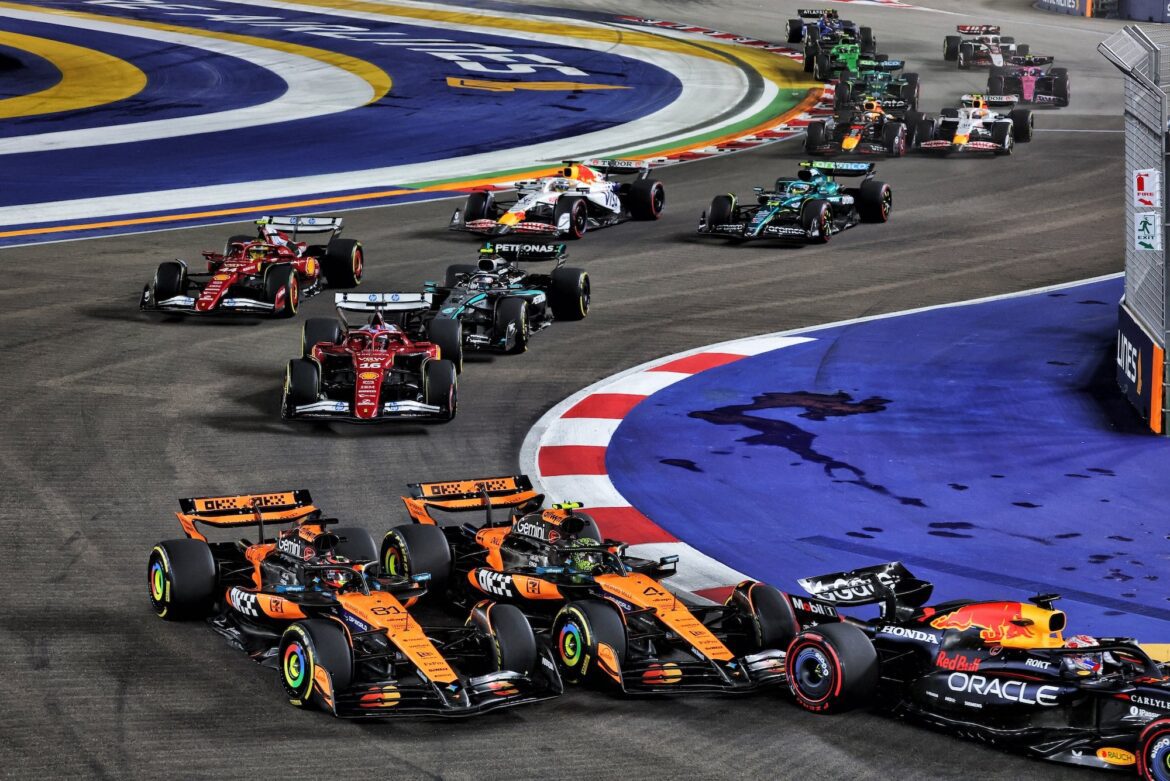Analysis of the McLaren Team Dynamics in the Singapore Grand Prix
The recent events during the Singapore Grand Prix have sparked considerable discussion, particularly concerning the intricate dynamics between McLaren teammates Oscar Piastri and Lando Norris. Andrea Stella, the team principal of McLaren, has shed light on the situation that unfolded during the race, addressing the controversial moments between the two drivers. In this article, we will delve into the details of the incident, the decision-making process of the McLaren team, and the implications for both drivers moving forward.
The Incident at Turn 2
During the race, a pivotal moment occurred at Turn 2 when Lando Norris made a move towards Oscar Piastri, who was his teammate. This aggressive maneuver did not sit well with Piastri, who expressed his displeasure over the team radio, requesting that the positions be swapped. He argued that the situation violated the team’s internal guidelines, often referred to as the "papaya rules." However, the McLaren team decided against instructing Norris to relinquish his position, allowing him to finish the race in third place while Piastri secured fourth.
This outcome was significant as it reduced the gap between the two drivers in the championship standings to just 22 points. The actions taken by Norris and the subsequent decision from the team have led to a variety of interpretations and discussions among fans and analysts alike.
Team Principal’s Perspective
Reflecting on the incident, Andrea Stella provided insights into the reasoning behind the team’s decisions. He clarified that the move made by Norris was not solely a matter of disregarding team dynamics. Instead, it was influenced by a minor contact between Norris and Max Verstappen’s Red Bull. This contact played a crucial role in shaping Norris’s actions, as it created an urgent need for him to assert his position on the track.
Stella emphasized that the team holds the authority to intervene in such situations if deemed necessary. However, after careful evaluation, they concluded that there was no compelling reason to enforce a position swap. He stated, "We believe that it was appropriate to let the situation play out as it did, but we want to ensure that our drivers communicate their positions clearly, which Oscar did."
The Aftermath of the Decision
The decision not to swap positions led to further discussions within the team and among fans. Stella acknowledged that the contact between the two teammates stemmed from a separate racing incident involving Norris and Verstappen, highlighting the complex nature of racing dynamics. He noted that while the contact was unfortunate, it was not entirely indicative of an ongoing issue between the two drivers.
As a result of the incident and the subsequent decisions made, Stella indicated that there would be a review process in the days following the race. This review aims to foster a stronger team environment and ensure that such situations are handled more effectively in the future. The goal is to enhance communication and understanding between the drivers, ultimately leading to better performance on the track.
The Importance of Team Communication
One critical takeaway from this incident is the importance of communication within a racing team. The ability for drivers to express their concerns and for the team to mediate effectively can play a significant role in avoiding conflicts and ensuring a cohesive strategy during races. Both Piastri and Norris are talented drivers, and their skills can be maximized when they work in harmony rather than in contention with one another.
Stella’s commentary on the need for clear communication underscores the necessity for teams to establish protocols that facilitate dialogue among drivers. This can help prevent misunderstandings during crucial moments in a race and ensure that all parties are aligned on the team’s objectives.
The Broader Context of Formula 1
In the broader context of Formula 1, team dynamics often come under scrutiny, especially when it involves teammates competing against each other. The case of McLaren serves as a reminder of the delicate balance that teams must maintain between fostering healthy competition and ensuring teamwork. As the season progresses, teams will need to navigate such challenges carefully, especially as drivers become more competitive in their pursuit of championship points.
The Singapore Grand Prix incident highlights that even within a unified team, individual ambitions can lead to friction. Understanding how to manage these situations effectively is crucial for teams aiming for success in the high-stakes environment of Formula 1.
Looking Ahead
As McLaren moves forward from the Singapore Grand Prix, the focus will undoubtedly shift towards the upcoming races and how the team can harness the strengths of both Piastri and Norris. With the championship standings becoming increasingly competitive, the importance of teamwork, communication, and strategic decision-making cannot be overstated.
The relationship between teammates can significantly impact a team’s overall performance. Both Piastri and Norris will need to demonstrate their ability to collaborate effectively, even when competing for the same goals. This will require patience, understanding, and a commitment to the team’s success above individual accolades.
In the coming weeks, fans and analysts will be keenly observing how McLaren addresses the lessons learned from the Singapore Grand Prix. The review process initiated by Stella and the team’s leadership will be critical in shaping the future interactions and strategies employed by the drivers.
Conclusion
The dynamics at McLaren, particularly in light of the recent incident during the Singapore Grand Prix, offer valuable insights into the complexities of Formula 1 racing. As teammates navigate their individual ambitions and the collective goals of the team, clear communication, strategic decision-making, and a commitment to collaboration will be essential for success. As the season unfolds, the McLaren team will aim to strengthen their internal dynamics, ensuring that both Piastri and Norris can thrive together on the track.
